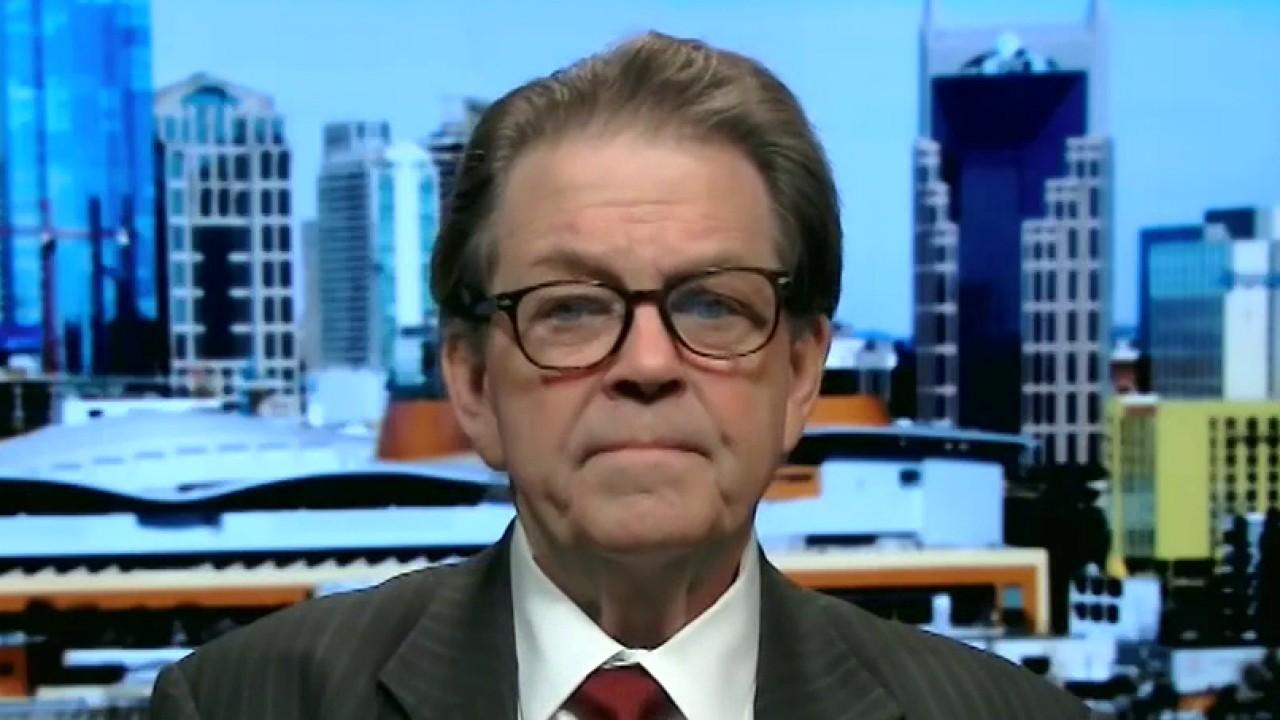The truth about Trump's tax cuts by the numbers, not by Biden: Andy Puzder
According to the nonpartisan Tax Foundation, the 2017 tax cut reduced effective tax rates “for all income groups in 2018.”
Democratic presidential nominee Joe Biden often talks about repealing President Trump’s “tax cuts for the wealthy,” claiming in a recent town hall that “about $1.3 trillion of the $2 trillion of the tax cuts went to the top 1/10th of 1 percent” of earners. But did the Tax Cuts and Jobs Act (TCJA) disproportionally benefit high earners? Comparing the income tax data for 2017 (the year before the TCJA became law) with 2018, clearly demonstrates that it did not.
According to the nonpartisan Tax Foundation, the TCJA reduced effective tax rates “for all income groups in 2018.” Because we have a progressive tax system, high earners pay the highest rates and received the largest rate reductions. However, lowering rates for a group of taxpayers does not necessarily reduce their share of the tax burden.
Let’s look at the TCJA’s impact on the top one percent of taxpayers. In 2018, 1.6 million taxpayers reported earning $500,000 or more. While the amount all taxpayers owed the IRS in 2018 declined by $64 billion, the amount these high earners owed increased by $16 billion.
Their share of the tax burden also increased. They accounted for 22 percent of total income in 2018 (a 0.5 percentage point increase over 2017) but their share of total income taxes rose to 40 percent (a 2.3 percentage point increase).
BIDEN TAX HIKE WOULD ACCELERATE EXODUS FROM HIGH-TAX STATES, EXPERTS PREDICT
By the way, you read that right. About 1.6 million, or one percent of all taxpayers, bore 40 percent of the income tax burden due to the federal government.
So, as a result of the TCJA, high earners paid more taxes to the government, while everyone else paid less. They also paid a larger percentage of all taxes, while everyone else paid a smaller percentage.
As a result of the TCJA, high earners paid more taxes to the government, while everyone else paid less. They also paid a larger percentage of all taxes, while everyone else paid a smaller percentage.
But what about the middle class specifically? While there is no accepted definition for the “middle class,” median family income in 2018 was $63,179, so let’s look at taxpayers making between $50,000 and $100,000.
In 2018, there were about 35 million taxpayers in this bracket, an increase of roughly one million over 2017 (a growing middle class). In total, they owed $31 billion less in 2018 than in 2017. In other words, the middle class got nearly half of the $64 billion decline in taxes owed under the TCJA.
BIDEN TAX PROPOSAL MIGHT HIT WEALTHY ESTATES WITH 67% RATE
As for their share of the tax burden, it also declined. While they accounted for 22 percent of total income (roughly the same as in 2017), their share of income taxes was 13 percent (over a percentage point less than in 2017).
Let’s look at taxpayers making under $25,000. The number of taxpayers in this bracket was 52 million in 2018, a drop of 2.3 million taxpayers from 2017. In total, their tax liability declined 16 percent or $4 billion, from $25 billion in 2017 to $21 billion in 2018.
Their share of the tax burden also declined. Those taxpayers accounted for 4 percent of total income (roughly the same as in 2017) but their share of taxes was one percent (slightly less than in 2017).
So here are the results of the Trump tax cuts:
--The income tax burden for high earners increased $16 billion to 40 percent of the total owed.
--The income tax burden for middle class earners decreased by $31 billion to 13 percent of the total owed.
--The income tax burden for low wage workers decreased by $4 billion to 1 percent of the total owed.
Doesn’t sound much like a tax cut for the wealthy.
So why does Biden keep saying what he says? To quote Ronald Reagan: “It isn’t so much that liberals are ignorant. It’s just that they know so many things that aren’t so.”
GET FOX BUSINESS ON THE GO BY CLICKING HERE
One reason high earners share of the tax burden increased is that the TCJA reduced the itemized deductions they were able to claim. High earners generally benefit more from itemizing deductions. Lower earners generally benefit more from the standard deduction.
In total, the TCJA cut the amount taxpayers claimed for itemized deduction in half from $1.3 trillion in 2017 to about $650 billion in 2018.
The TCJA’s elimination of the deduction for state and local taxes (SALT) alone was responsible for $240 billion or 37 percent of that decrease. The SALT deduction primarily benefits high earners in high tax blue states. Despite claiming that he wants to increase taxes on high earners, Biden supports restoring the SALT deduction -- which would reduce them.
As for middle- and lower-wage earners, the number of tax returns claiming the standard deduction increased in 2018 by 29 percent to 134 million. Because the TCJA increased this deduction, the amount those taxpayers deducted increased $1.4 billion or 156 percent from $900 million to $2.3 billion.
In reality, thanks to the TCJA, working and middle-class Americans were earning more and keeping more of what they earned following the Trump tax cuts. That meant bigger paychecks and an easier time meeting household expenses.
As a group, high earners were paying more and bore a greater percentage of the income tax burden.
Biden can claim otherwise but that won’t make it so.
Andy Puzder was chief executive officer of CKE Restaurants for more than 16 years, following a career as an attorney. He is currently a Senior Fellow at the Pepperdine University School of Public Policy. He was nominated by President Trump to serve as U.S. labor secretary. In 2018, Puzder authored "The Capitalist Comeback: The Trump Boom and the Left's Plot to Stop It" (Center Street). His latest piece, a Broadside by Encounter Books titled, “It’s Time to Let America Work Again” was released on July 20, 2020.






















